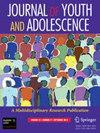学校没有安全空间:探索美国青少年的权力动力学、欺凌地点和适应不良行为。
IF 3.6
1区 心理学
Q1 PSYCHOLOGY, DEVELOPMENTAL
引用次数: 0
摘要
校园欺凌不仅仅是一个随机事件,而且在每个欺凌事件中都涉及复杂的权力动态。然而,关于这种权力不对称是否会导致学校环境中不同的欺凌空间模式,从而导致欺凌者和受害者对学校环境中社会空间使用的不同看法,我们知之甚少。此外,不同的欺凌受害经历和权力失衡如何共同导致受害者的异质适应不良行为反应仍不清楚。作为回应,本研究首次进行了潜在阶级分析,以确定欺凌受害者的亚群体,并根据与欺凌者的权力差异、欺凌地点及其与不同行为反应的关联对这些亚群体进行了比较。本研究使用的青少年样本来自国家犯罪受害调查的2022年学校犯罪补充(SCS) (n = 1249;年龄12-18岁[平均:14.3;SD: 1.85);男性45.8%;79.3%白人,9.8%黑人,2.5%亚洲人,8.4%其他种族)。五个受害者类别出现了:“边缘受害者”(29.3%)、“被压制的受害者”(28.2%)、“特定教室的受害者”(16.7%)、“特定走廊的受害者”(16.8%)和“普遍受害者”(9%)。逻辑回归的结果显示,“强势受害者”和“普遍受害者”更有可能表现出逃避和恐惧等适应不良行为,但与“边缘受害者”组相比,只有“普遍受害者”组携带武器上学的可能性增加。研究结果表明,欺凌与权力动态有着复杂的联系,在学校空间中也会出现主从关系。教室和走廊等结构化区域成为主要的欺凌场所,挑战了欺凌主要发生在非结构化空间的假设。这项研究揭示了青少年之间的权力不平衡如何影响他们对学校空间的感知和使用,表明青少年根据他们在社会等级中的地位发展出不同的行为反应。本文章由计算机程序翻译,如有差异,请以英文原文为准。
No Safe Space at School: Exploring Power Dynamics, Bullying Locations, and Maladaptive Behaviors Among US Adolescents.
School bullying is not merely a random event but rather involves intricate power dynamics in each bullying event. However, less is known about whether this power asymmetry could lead to different spatial patterns of bullying within the school environment, contributing to distinct perceptions of the usage of social spaces within the school context defined by bullies and victims. Further, it remains unclear how differentiated bullying victimization experiences and power imbalances could jointly result in victims' heterogeneous maladaptive behavioral responses. In response, this study was the first to conduct latent class analysis to identify subgroups of victims of bullying and compare these subgroups based on power differences with the bullies, locations of bullying, and their associations with distinct behavioral responses. This study used the adolescent sample from the 2022 School Crime Supplement (SCS) of the National Crime Victimization Survey (n = 1249; ages 12-18 years [mean: 14.3; SD: 1.85]; 45.8% male; 79.3% White, 9.8% Black, 2.5% Asian, and 8.4% other racial groups). Five victim classes emerged: "Marginal victims" (29.3%), "Outpowered victims" (28.2%), "Classroom-specific victims" (16.7%), "Hallway-specific victims" (16.8%), and "Pervasive victims" (9%). Results of logistic regression revealed that "Outpowered victims" and "Pervasive victims" were significantly more likely to exhibit maladaptive behaviors such as avoidance and fear, but only the "Pervasive victims" group showed an increased likelihood of carrying weapons to school, compared to the "Marginal victims" group. The findings suggest that bullying is intricately tied to power dynamics, with dominant-subordinate relationships reproduced in school spaces. Structured areas, such as classrooms and hallways, emerged as key bullying sites, challenging assumptions that bullying primarily occurs in unstructured spaces. This study reveals how power imbalances between adolescents shape their perception and use of school spaces, demonstrating that youth develop different behavioral responses based on their position in social hierarchies.
求助全文
通过发布文献求助,成功后即可免费获取论文全文。
去求助
来源期刊

Journal of Youth and Adolescence
PSYCHOLOGY, DEVELOPMENTAL-
CiteScore
8.20
自引率
6.10%
发文量
155
期刊介绍:
Journal of Youth and Adolescence provides a single, high-level medium of communication for psychologists, psychiatrists, biologists, criminologists, educators, and researchers in many other allied disciplines who address the subject of youth and adolescence. The journal publishes quantitative analyses, theoretical papers, and comprehensive review articles. The journal especially welcomes empirically rigorous papers that take policy implications seriously. Research need not have been designed to address policy needs, but manuscripts must address implications for the manner society formally (e.g., through laws, policies or regulations) or informally (e.g., through parents, peers, and social institutions) responds to the period of youth and adolescence.
 求助内容:
求助内容: 应助结果提醒方式:
应助结果提醒方式:


